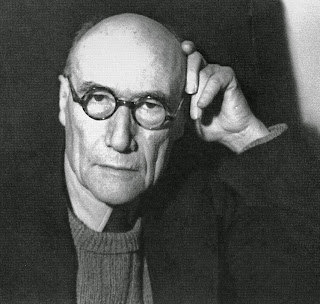Trinity Sunday is the culmination, in a sense, of the
Church’s liturgical year. We move from Advent to Christmas, from Christmas to
Epiphany, from Epiphany to Lent, from Lent to the Cross, from Good Friday to
Easter, from Easter to Whitsun, from Whitsun to the Ascension, and from
Ascension Day to Trinity. Then comes what once described as ‘the long green
highway of the year’, the Sundays After Trinity with their noble and varied
Collects. But what of Trinity itself?
For the human race, apparently mired in death, the Great
Event is the Resurrection. But the Resurrection cannot be taken without the
Cross; the two together are the great outpouring of the Son’s love for us; and
the Son is not, cannot be, without the Father. “Do you not believe that I am in
the Father and the Father in me? The words that I say to you I do not speak on
my own authority; but the Father who dwells in me does his works.” (Jn 14:10)
And beyond that, there is the Holy Spirit: “And I will pray the Father, and he
will give you another Counselor, to be with you for ever, the Spirit of truth,
whom the world cannot receive, because it neither sees him nor knows him; you
know him, for he dwells with you, and will be in you.” (Jn 14:16-7)
And so, meditating, thinking and praying (and frequently
quarrelling), the Church came eventually (381 AD) to the doctrine of the
Trinity: the Triune God, one God, three Persons. The Resurrection is the Event;
the Trinity is the great Mystery of the faith. In the view of St Basil, his brother Gregory of Nyssa and
Gregory of Nazianzus, as Karen Armstrong explains in A History of God, “the Trinity only made sense as a mystical or
spiritual experience . . . It
was not a logical or intellectual formulation but an imaginative paradigm that
confounded reason. Gregory of Nazianzus made this clear when he
explained that contemplation of the Three in One induced a profound and
overwhelming emotion that confounded thought and intellectual clarity. ‘No
sooner do I conceive of the One than I am illumined by the splendor of the
Three; no sooner do I distinguish Three than I am carried back into the One.
When I think of any of the Three, I think of him as the whole, and my eyes are
filled, and the greater part of what I am thinking escapes me.’”
And yet
it is a mystery that Jesus lets us in on, lets us into: because the Spirit
dwells with us and in us, and if the Spirit and the Son and the Father are one,
we are taken up into that great beating cosmic heart of Love. How do we celebrate it? All (of the
Faith) is always present, wrote T.S. Eliot; yet the point of the liturgical
year is that we can concentrate on some individual aspects at any one time.
When the parable of the Good Samaritan is read, we look on the people we pass
in the street in a new way; in Lent, we give a different attention to those who
suffer; and on Trinity Sunday we might usefully learn from the Carthusians and
other contemplative orders to meditate on the mystery as Gregory did. The more so
in that that same Mystery has chosen to dwell with and in us, poor clods that
we are.
CONTRA
SPINOZAM TRINITAS
Thy way
of being was a Clock of clocks,
A
self-perpetuate motion, and that Love
Was, to
create by necessary law;
And
they reproach’d for Paradox
My
words that thou, perfect above,
Didst
need no more;
Sure
they are blind who do not see
Thy
love in this, that being is a gift;
Who do
not sense that we
And all
the random forms of hill and drift
Are
here by no necessity
But by
thy lasting Courtesy:
So they
forget thy Trinity.
Out of thy joyous solitude
And tender in omnipotence
To shape a world and on it brood,
Fashioning trees and men of sense;
From archangelic psalmody
Mankind having destruction drawn,
To enter into agony
And for their healing to be torn;
And, resurrected, still to dwell,
Informing our experience,
Praying in us, Immanuel,
Unravelling our impotence;
Such
thy unnecessary love: can we do less,
Released
from death,
Than
savour each delight of breath,
Blessing
Thy wilfulness?
RK




.jpg)

